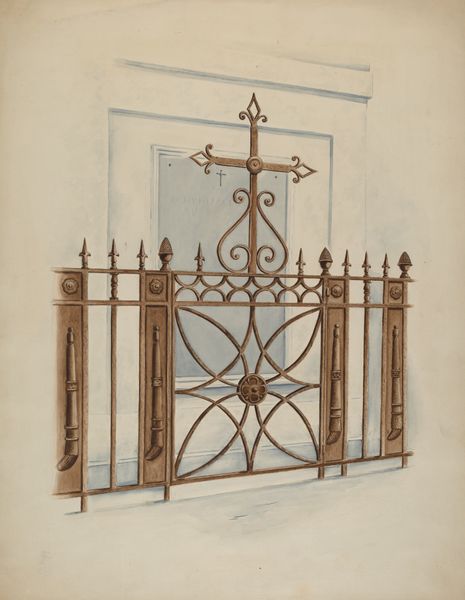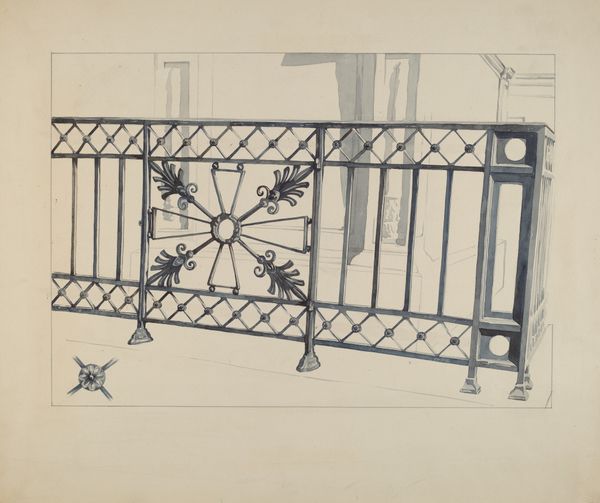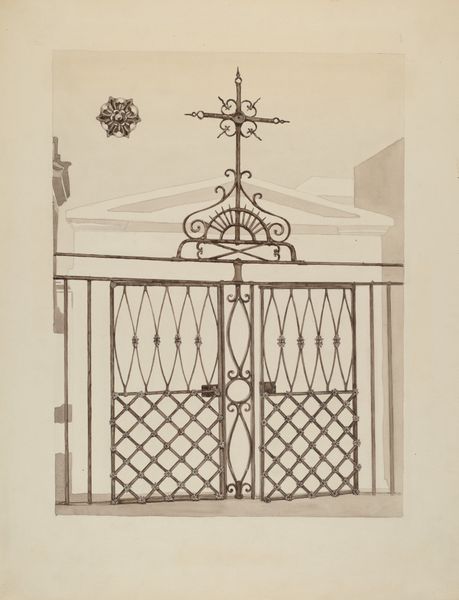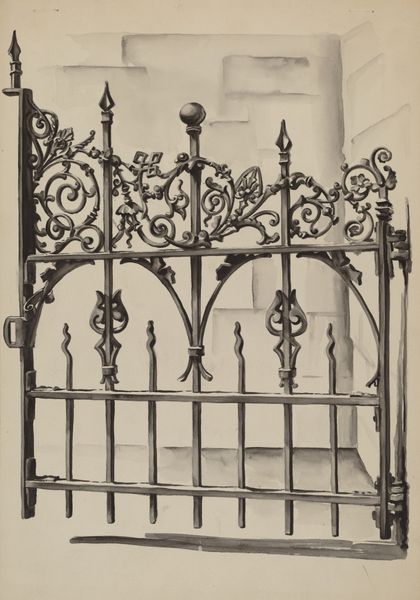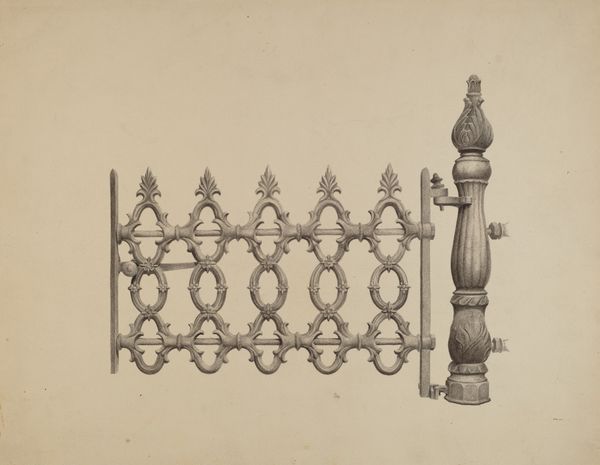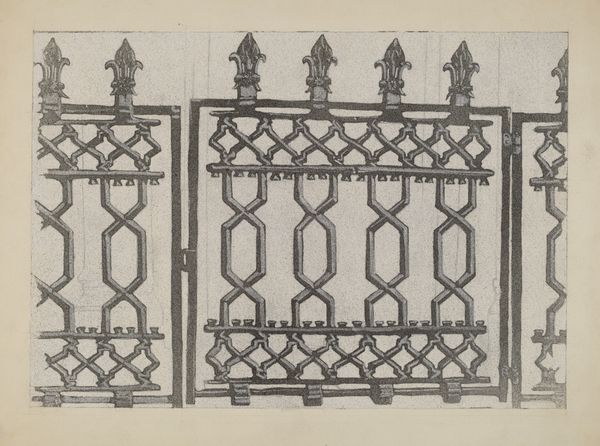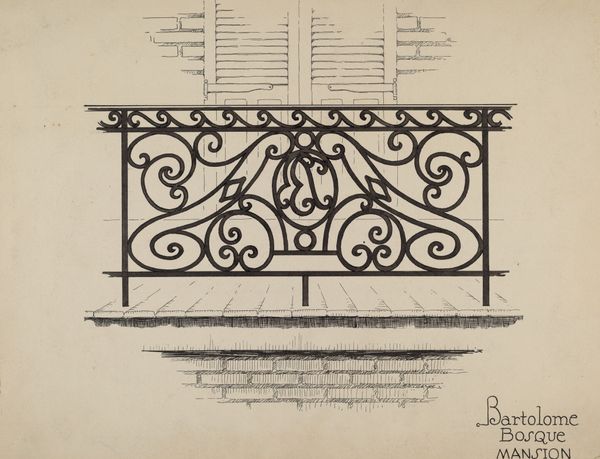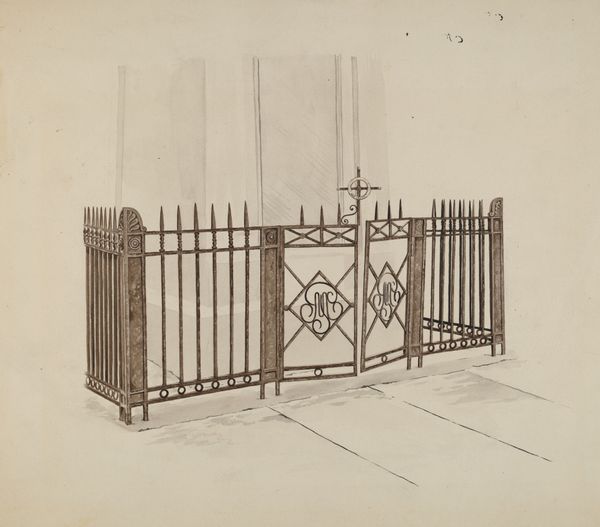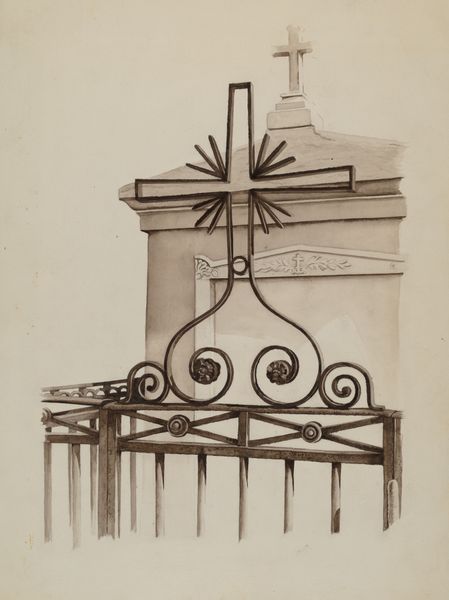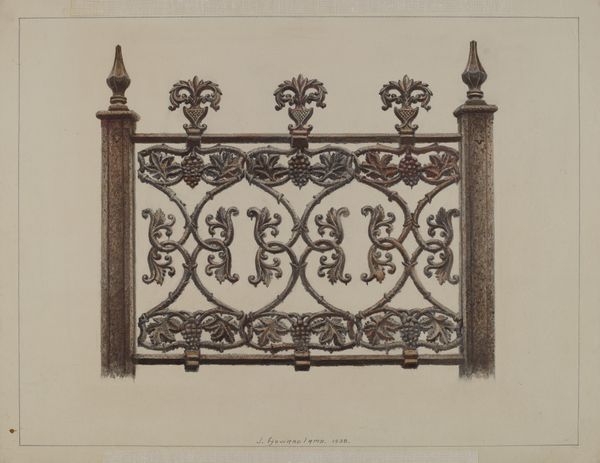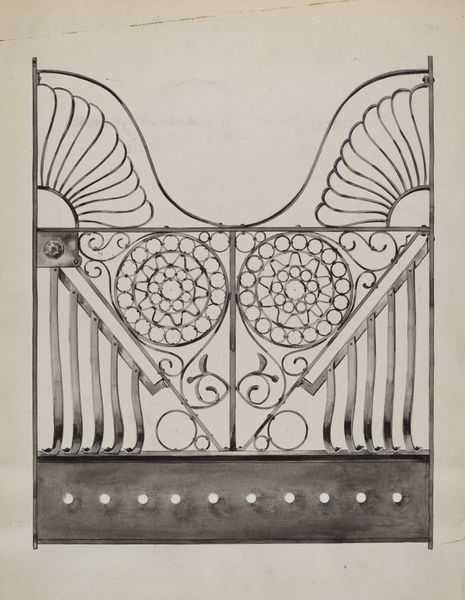
drawing, metal
#
drawing
#
metal
#
geometric
#
line
#
cityscape
#
watercolor
Copyright: National Gallery of Art: CC0 1.0
Curator: This drawing presents a study of an "Iron Gate and Fence," dating from around 1936. The artist is Ray Price, and the rendering involves watercolor on paper, depicting an element that feels distinctly urban. What's your immediate response to it? Editor: Restrained. Elegant. The pale wash gives it an airy quality, contrasting with the density implied by iron. It evokes the quiet sophistication of pre-war design, don’t you think? Curator: Absolutely. The delicate use of line and shading feels intentional. Considering the date, it appears as though we are on the cusp of monumental socio-political shifts worldwide, where anxieties were on the rise, this gate, perhaps unwittingly, signifies power, restriction, but simultaneously an embrace of Art Deco design, representative of upward mobility and newness. The symbolism inherent within gates across many cultures as thresholds needs exploration. Editor: Good points. But the medium also draws me in. Metalwork drawings demand a certain degree of technical skill. Ironwork in particular is labour-intensive. It involves skilled hands, the application of heat, the bending and shaping of raw materials. And even a drawing points back to those processes, making me question the socio-economic status of iron workers during the period. It raises questions about craft versus fine art, and the perceived hierarchies. Curator: Your reading highlights those essential issues concerning material agency and lived experience. It makes me reconsider this artwork. We need to think about its location too. Would this be an indicator of segregation or, conversely, aspiration for shared common spaces? Or both at the same time? This drawing sits somewhere in that tension between aspiration and denial. Editor: Yes, I completely agree, the drawing captures a transient state. It reminds me that even functional objects tell stories, particularly those shaped by material constraints and social interactions. Curator: Indeed. This artwork reminds us how material culture preserves narratives of aspiration and exclusion, reminding us of a world shaped as much by ideas of luxury and taste as labor and lived realities. Editor: It also reminds us how craft can provide us with historical records about process and the act of making.
Comments
No comments
Be the first to comment and join the conversation on the ultimate creative platform.
